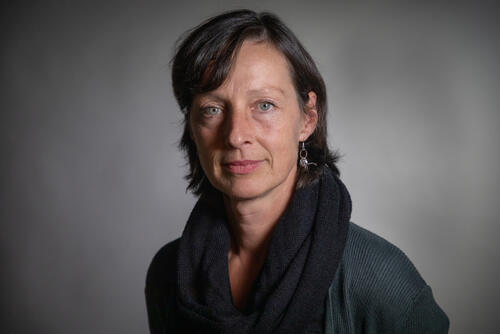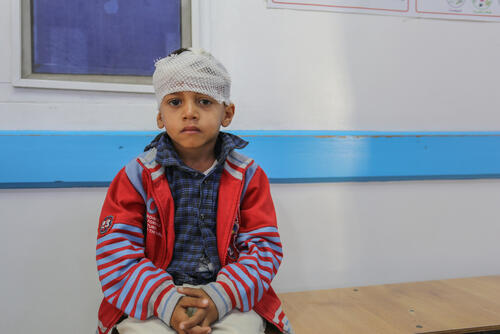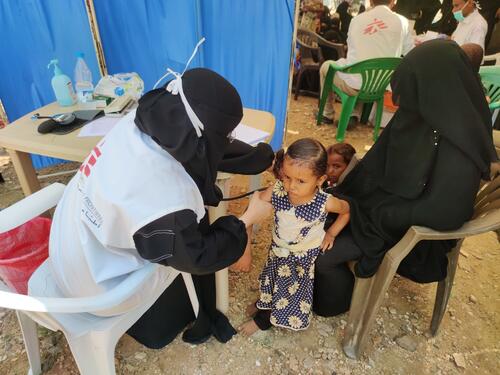When Sara* arrived at her local health centre in Al-Jawf, a governorate of desert and rock in northern Yemen, she breathed a sigh of relief. Last year it had taken her so long to get there that she had been forced to deliver on the road, and the baby had died. This time, she thought she had got there in good time; but her sense of relief was not to last. The health centre staff told her they could not help. This year they had not been given the supplies they needed.
She would have to drive another five hours, to a Médecins Sans Frontières (MSF) hospital in Amran governorate, to have a hope of safely delivering her baby. She made it, and gave birth to twins; but it cost her hours of anxiety on a journey for which her husband had to pay US$70 - a huge amount of money for a poor family in Yemen.
Sara’s account is just one of thousands of stories about the struggle to get lifesaving healthcare in Yemen. Sara and her baby survived, but many of these stories have tragic endings; tragic endings that could be avoided by making some basic improvements to the way humanitarian aid is delivered in Yemen.
Funding for the response has fallen far short this year, a travesty given the depth of need in the country. MSF has seen, however, that the current model of assistance is simply ineffective. With the review of the 2021 Yemen humanitarian response strategy currently underway, this is a key moment to address the shortfalls. What is needed is not just more money, but a fundamental re-think of how aid is delivered in Yemen. The response programmes have to become more hands-on to improve quality and relevance; and the mechanisms to quickly switch into emergency mode to respond to new, rapidly-appearing crises, have to be much sharper and more reactive.
Currently, due to flawed ways of working and restrictions from the authorities, too much of the humanitarian aid in Yemen is managed remotely. It is rare that staff from the UN agencies or larger NGOs provide on-the-ground oversight of activities, making it nearly impossible to fully understand the reality of the situation on the ground, in order to effectively meet people’s actual needs.

Take the response to Yemen’s recent cholera outbreaks. MSF’s emergency treatment centres were full of sick patients, so we know that the crisis was acute and serious. But we also know that many diarrhoea treatment centres around the country lacked support on issues like infection prevention and control, vital to prevent the centres from becoming places where patients contract the disease rather than being treated for it.
In the spring of 2019, MSF teams visited nine diarrhoea treatment centres and found that infection prevention and control measures were sub-standard in six centres, and almost entirely absent in the three others. Hands-on oversight by the supporting organisations to identify the issues and provide training would have solved the problem. It was absent, however, so the problems persisted, unnoticed and unaddressed.
Another example is Ad-Dahi hospital in Hodeidah governorate, where maternity services are supported by a local NGO implementing the programme of a UN agency. While the UN agency pays incentives to top up staff salaries, they do not provide onsite technical support for medical staff. The result is that the maternity unit frequently cannot treat the patients who arrive because our colleagues who work for this NGO lack the capacity to do so.
An MSF team is present in the same hospital to manage the emergency room, which means that we see the results of insufficient maternal care and we often provide care for many of the complex obstetric cases. In other hospitals where specialised organisations are not present to offer complementary support to medical staff who are often overworked and under-equipped, this is having deadly consequences.
There is a structural flaw in the current approach that puts an overwhelming focus on support to state institutions with little oversight. The blurred discourse between humanitarian action and development benefits the authorities, who are further emboldened to argue that aid delivery must go through them. UN agencies and NGOs are routinely reduced to mere intermediaries between donors and state institutions, moving supplies and funds without providing any hands-on supervision, effective monitoring or technical support.

In addition, even after six years of conflict, the humanitarian response is still not able to respond quickly and effectively to emergencies. COVID-19 is the latest example; at the onset of the pandemic, UN agencies evacuated a significant number of staff, leaving health authorities and organisations like MSF largely on their own.
In some cases, ventilators were sent to hospitals where there were no staff trained to use them or sometimes even electricity to switch them on. Without people on the ground, there was no way to ensure that the funds and supplies sent were improving people’s access to medical care in reality, or even making it to where they were most needed. Is this acceptable as a model of providing aid in Yemen? Or should this approach be reconsidered?
It is true that restrictions and obstacles imposed by authorities are a permanent feature of working in Yemen. Administrative difficulties to get visas for specialist staff and enormous difficulties importing supplies add frustration and complexity. And there are indeed areas where insecurity makes it difficult to travel. Despite these immense challenges, MSF and some humanitarian organisations do manage their projects directly, but without a fundamental review of the humanitarian response strategy, these examples are doomed to remain exceptions.
Stories like Sara’s remind us every day that a well-funded humanitarian response is vital. But knowing that the next major emergency is not a matter of if but of when, humanitarian organisations are today not equipped to address people’s needs in a timely and effective manner in Yemen. A big shift is needed to a strategy of providing hands-on lifesaving activities together with an effective capacity to respond to emergencies. “More of the same” will do nothing to improve the conditions of the most vulnerable people.
Donors and UN agencies have the power and responsibility to make this better, and they can do so if they start to radically overhaul the system of aid for Yemen. The ongoing review of next year’s humanitarian strategy for Yemen presents a crucial opportunity to do so. The lives of many people like Sara depend on it.
*Name changed to protect privacy







